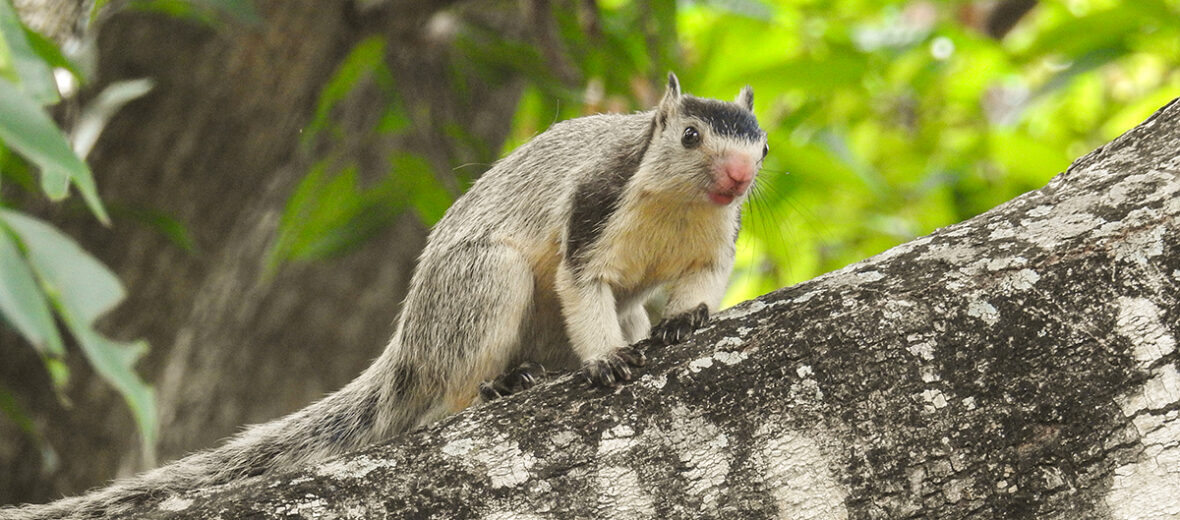
The grizzled giant squirrel, aka Sri Lankan giant squirrel, hails from southern India and Sri Lanka. They prefer dry deciduous forests, highlands, hill forests, and patches of riparian forests near riverine habitats. Due to the threats of habitat loss and destruction at the hands of residential and commercial developments, fires, mismanaged fire suppression, and deforestation from the logging industry; hunting; and trapping, these critters are listed as Near Threatened by the IUCN. Their numbers are also decreasing.
First the Stats…
Scientific name: Ratufa macroura
Weight: Up to 6.6 lbs.
Length: Up to 14.57 inches, plus up to a 14.96 inch tail
Lifespan: Up to 8 years
Now on to the Facts!
1.) Grizzled giant squirrels are diurnal (active during the day).
2.) They are also highly arboreal (spend their lives in trees).
3.) Their large eyes afford them with superb vision, but their sense of hearing isn’t as keen.
4.) These squirrels are solitary until they find a mate.
5.) The grizzled giant squirrel is very territorial and will fiercely defend their territory from other squirrels.
But wait, there’s more on the grizzled giant squirrel!
6.) Being very vocal critters, these squirrels can be heard producing a loud and staccato call (sharply detached or separated from the others), with a repeated shrill sounding cackle. Communication with other individuals is exhibited by a low “churr” sound.
7.) When bothered or threatened these critters will either freeze in place or flee.
Did you know…?
A group of squirrels is called a colony, dray, or scurry.
8.) Various nuts, fruits, bird eggs, and invertebrates are all on the menu.
9.) Females undergo up to a 28 day gestation (pregnancy) that yields up to 2 kittens, aka kits or pups.
10.) Kits stay with mom for up to 3 months before departing to start life on their own.
Now a Short Grizzled Giant Squirrel Video!
Be sure to share & comment below! Also, check out the Critter Science YouTube channel. Videos added regularly!
Want to suggest a critter for me to write about? Let me know here.
Some source material acquired from: Wikipedia & IUCN
Photo credit: Bio Diversity India



